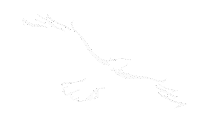CHAPTER XXIV.
THE SOURCES OF THE MISSISSIPPI BECOME OPEN TO THE ENTERPRISE OF THE FUR
TRADE, 1792.
John Baptiste Cadotte--His early career as an Indian
trader--He organizes a large trading expedition to explore the sources of
the Mississippi--He winters on Leaf River and is attacked by the
Dakotas--Peace effected and he visits the camp of his enemies to
trade--Treachery of the Dakotas--A division of Cadotte's party winter at
Prairie Portage, on Red River, and another at Pembina--Trouble with the
Dakotas at Prairie Portage--Return of the Expedition by way of Rainy Lake
and Pigeon River--Arrival at Grand Portage--Northwest Fur Company proceed to
occupy the Upper Mississippi country--They locate a depot at Fond du
Lac--They build stockaded posts at Sandy Lake and at Leech Lake--Occupation
of Red Lake by the Ojibways dated from this Expedition--Death of Negro Tom.
The great Basin covered with innumerable lakes and streams,
from which the Mississippi, flowing into the Gulf of Mexico, and Red River,
flowing into Hudson's Bay, take their rise, was first fully opened to the
enterprise of the old northwestern fur traders, by John Baptiste Cadotte, a
son of the Mons. Cadotte, who is so often mentioned in the earliest era of
the white man's intercourse with the Ojibways, and who figures so
prominently in the simple but truthful narrative of Alexander Henry.
John Baptiste Cadotte received a college education at
Montreal. A record of the Cadotte family from parish and other records is
given in another article in this volume,--E. D. N. He was among the first
individuals whose European, or white blood, became intermixed with the blood
of the Ojibways. On leaving college, he became possessed of forty thousand
francs, which had been bequeathed to him by his father, and with this sum as
a capital, he immediately launched into the northwestern fur trade. He
wintered on the Bay of Shag-a-waum-ik-ong, and made large returns of beaver
skins to the market at Montreal. His careless and spendthrift habits,
however, and open-handedness and generosity to his Indian relatives, soon
caused him to run through with his capital and profits of his trade. Unable
to raise equipment on his own account, he applied for help to Alexander
Henry, who had traded in partnership with his deceased father, and who
still, from his establishment at Montreal, continued in the fur trade. Henry
provided him with a large equipment for an expedition, which Cadotte
proposed to make to the headwaters of the Mississippi, where beaver were
reported to abound in great plenty.
The ferocity of the Naud-o-wa-se, or Dakotas, who still
kept possession of this region of country, battling stoutly for it against
the persevering pressure of the Ojibway hunters, was the theme of every lip
at Montreal, Mackinaw, and Sault Ste. Marie, and deterred really an
enterprising trader from proceeding to winter on these dangerous grounds.
The few enterprising men who had risked these dangers from time to time, had
been attacked by the Dakotas, and the pillage of the sick trader by the
Ojibways, which has given the distinctive name of Pillagers to an important
division of this tribe, also contributed greatly to shut up this, then
almost unknown, region of country to the enterprise of the fur trader.
Cadotte, noted for courage and fearlessness, easily formed
a large party, consisting of traders, "Coureurs du bois," trappers, and a
few Iroquois Indians, who had assumed the habits and learned to perform the
labor, of Canadian "voyageurs," to accompany him on an expedition to these
dangerous regions. Besides his own immediate engagees and servitors, the
party consisted of the trader Reyaulm and his men; Pickette, Roberts, and
Bell, with their men fully equipped for trading and trapping. Altogether
they numbered sixty men, among whom was also a younger brother of Cadotte,
named Michel, who managed an outfit on his own account.
This large party started from Sault Ste. Marie late in the
summer, in large birch bark canoes, of over a ton burthen each, which were
then denominated "Canoe du maitre," and made expressly for the fur trade,
they being comparatively light and easily carried across portages on the
shoulders of the "contents du bois." Cadotte coasted along the southern
shores of Lake Superior, and proceeded to Fond du Lac, its extreme head. He
entered the St. Louis River, and packing their canoes and equipments over
the nine-mile, or "grand portage," which leads around the tremendous rapids
and falls on this river, they poled up its rapid current, and proceeded by
the old or prairie portage route, into Sandy Lake. From this point, my
informants differ as to which route the party took. Some state, that they
ascended the Mississippi to Leech Lake, crossed over to Cass Lake by a short
portage, proceeded to Red Lake, thence into Red River, up which stream they
proceeded a short distance and finally located their winter quarters at
"Prairie portage," where they were met by two traders who had come by the
Grand Portage, or Rainy Lake route, one of whom was Cameron, 1 For a notice
of Cameron see "History of Ojibways based upon official and other records"
which follows Warren's History in this volume.--E. D. N. Noted as being
among the earliest pioneers into these then remote northwestern regions.
This is the account, as given by Mr. Bruce, a half-breed Ojibway who was
born at Grand Portage on Lake Superior, and is now seventy-eight years of
age, still possessing a perfect and surprising memory. He was a young man at
the time of this celebrated expedition, and wintered the same year of its
occurrence, as an engagee, at a small trading post on Great Lake, Winnipeg,
and made, on g small outfit, the enormous returns of forty,-eight packs of
beaver skins, showing the great abundance of this valuable animal in those
times, in these northern regions.
Madame Cadotte, relict of Michel Cadotte, who is mentioned
as having joined this party, and who is now nearly ninety years of age,
relates that she, with really other women of the party, were left to winter
at Fond du Lac, as their husbands were going into a dangerous region, and
did not wish to be encumbered with women. Her son, Michel Cadotte, Jr., now
living at La Pointe, and aged sixty-one years, was then in his cradle. This
old woman's memory is still good, and she gives the following account of the
progress and adventures of the party after they reached Sandy Lake:--
They proceeded down the Mississippi to the forks or entry of Crow Wing
River, which they ascended, and cold weather overtaking them at the mouth of
Leaf River, which empties into the Crow Wing, and discovering here numerous
signs of beaver, and it, also, being as far as they dare proceed into the
country of the fierce and warlike Dakotas, Mons. Cadotte located his winter
quarters, and set his men immediately to work in erecting log huts
sufficient to hold his whole party and his winter supplies. The country was
then covered with game, such as buffalo, elk, bear, and deer, and the
hunters soon collected a sufficient quantity of meat for their winter's
consumption. Signs of the vicinity, of the much dreaded Dakotas being
discovered, Cadotte ordered a log fence or wall to be thrown up around his
cabins for a defense against any attack which these people, on whose hunting
grounds he was encroaching, might think proper to make on him.
In those days, Leech Lakewas considered as the extreme
northwestern frontier of the Ojibway country, and but a few hardy and
fearless hunters, who had already earned the name of Pillagers, remained
permanently located on the islands of the lake, for greater security against
the oft-repeated attacks and incursions of their enemies. Happy to hunt on
the rich hunting grounds of the Dakotas, under the protection of such a
large party of white traders, the Pillager and Sandy Lake hunters moved in
their wake, and lay scattered about in different winter camps, in the
vicinity of their winter quarters, carrying on, with the different traders,
an active barter of furs for their merchandise.
When all the preparations for passing the winter
comfortably and safely had been completed, the trappers were sent out in
small parties, to pursue their winter's avocation, wherever they discovered
the wigwams of the industrious but fated beaver to abound in the greatest
plenty. Cadotte, was left with but few men at the winter quarters, when
early one morning a large party of Dakota warriors made their appearance,
arrayed and painted for battle. They approached the wall which surrounded
the log cabins, leaping from side to side and yelling their war-whoop, and
when arrived within bullet range they discharged a cloud of arrows, and such
few as were armed with guns fired upon the white man's defenses. Two of
Cadotte's men were slightly wounded from the repeated discharges and volleys
of the enemy, yet he desisted from returning their fire, and commanded his
exasperated men not to fight. His numbers being feeble, he could not be
certain as to the result of a battle, and at the same time being anxious to
conciliate and be at peace with the Dakotas, for the sake of their trade, he
determined to make a trial to disarm their enmity. He ordered the British
flag to be planted on his defenses, and hoping that his assailants might
understand its import, he hung out a white flag on a pole. His hopes were
not disappointed, for as soon as the flags were fully displayed, the enemy
ceased firing, and after a short consultation among themselves, a number of
their warriors cautiously approach the defenses, which surrounded the
traders' cabins.
conclude chapter 24
1
- 2
- 3
- 4
- 5
- 6
- 7
- 8
- 9
- 10
11
- 12
- 13
- 14
- 15
- 16
- 17
- 18
- 19
- 20
21
- 22
- 23
- 24
- 25 - 26 - 27 - 28 - 29 - 30
White Eagle Soaring: Dream Dancer of the 7th Fire






 Get
a course to promote your business online, explode your sales
Get
a course to promote your business online, explode your sales Get
software to promote your business online in less time
Get
software to promote your business online in less time Get
software to streamline your business and run it hands free.
Get
software to streamline your business and run it hands free.